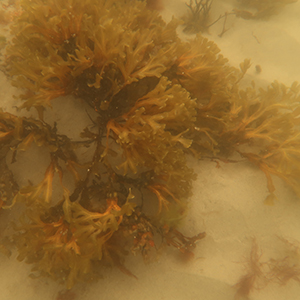Mapping bathymetry and shallow water benthic habitats in inland and coastal waters with Sentinel-2

Submitted: 9 August 2022
Accepted: 20 February 2023
Published: 15 March 2023
Accepted: 20 February 2023
Abstract Views: 1651
PDF: 501
HTML: 68
HTML: 68
Publisher's note
All claims expressed in this article are solely those of the authors and do not necessarily represent those of their affiliated organizations, or those of the publisher, the editors and the reviewers. Any product that may be evaluated in this article or claim that may be made by its manufacturer is not guaranteed or endorsed by the publisher.
All claims expressed in this article are solely those of the authors and do not necessarily represent those of their affiliated organizations, or those of the publisher, the editors and the reviewers. Any product that may be evaluated in this article or claim that may be made by its manufacturer is not guaranteed or endorsed by the publisher.
Similar Articles
- J. Salvador Hernandez-Aviles, Roberto Bertoni, Miroslav Macek, Cristiana Callieri, Why bacteria are smaller in the epilimnion than in the hypolimnion? A hypothesis comparing temperate and tropical lakes , Journal of Limnology: Vol. 71 No. 1 (2012)
- Hortência de Souza Barroso, Janaina A. Santos, Rozane V. Marins, Luiz Drude Lacerda, Assessing temporal and spatial variability of phytoplankton composition in a large reservoir in the Brazilian northeastern region under intense drought conditions , Journal of Limnology: Vol. 77 No. 1 (2018)
- John M. Gunn, Brian W. Kielstra, Erik Szkokan-Emilson, Catchment liming creates recolonization opportunity for sensitive invertebrates in a smelter impacted landscape , Journal of Limnology: Vol. 75 No. s2 (2016): Lake Orta: a new lease on life
- Dunja Lukic, Csaba F. Vad, Zsófia Horváth, Isolation by sugar flotation has no direct effect on the hatching success of zooplankton resting eggs , Journal of Limnology: Vol. 75 No. 2 (2016)
- Francisco Diogo R. Sousa, Alexandre V. Palaoro, Lourdes M.A. Elmoor-Loureiro, Alexey A. Kotov, Predicting the invasive potential of the cladoceran Daphnia lumholtzi Sars, 1885 (Crustacea: Cladocera: Daphniidae) in the Neotropics: are generalists threatened and relicts protected by their life-history traits? , Journal of Limnology: Vol. 76 No. 2 (2017)
- Margarita Jambrina, Ildefonso Armenteros, Ángel Corrochano, Clemente Recio, Origin and hydrogeochemistry of a shallow flow-through lake on a Pleistocene piedmont, northern Spanish Meseta , Journal of Limnology: Vol. 72 No. 2 (2013)
- Chuang-Chun Huang, Yun-Mei Li, Hao Yang, De-Yong Sun, Liang-Jiang Xu, Xia Chen, Study of influencing factors to chromophoric dissolved organic matter absorption properties from fluorescence features in Taihu lake in autumn , Journal of Limnology: Vol. 72 No. 2 (2013)
- Gayane Shahnazaryan, Martin Schultze, Karsten Rinke, Bardukh Gabrielyan, Lake Sevan. Past, present, and future state of a unique alpine lake , Journal of Limnology: Vol. 81 No. s1 (2022): Lake Sevan. Past, present, and future state of a unique alpine lake
- Agnieszka Szlauer-Łukaszewska, The dynamics of seasonal ostracod density in groyne fields of the Oder River (Poland) , Journal of Limnology: Vol. 73 No. 2 (2014)
- Fatma Sahindokuyucu Kocasari, Iskender Gulle, Sukru Kocasari, Selcuk Pekkaya, Firdevs Mor, The occurrence and levels of cyanotoxin nodularin from Nodularia spumigena in the alkaline and salty Lake Burdur, Turkey , Journal of Limnology: Vol. 74 No. 3 (2015)
<< < 18 19 20 21 22 23 24 25 26 27 > >>
You may also start an advanced similarity search for this article.

 https://doi.org/10.4081/jlimnol.2023.2091
https://doi.org/10.4081/jlimnol.2023.2091





